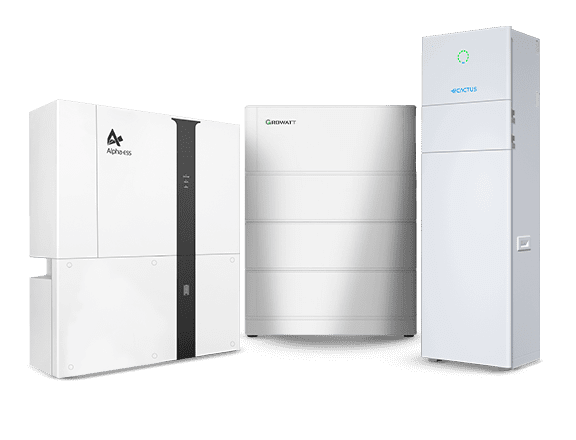
In today’s world of increasing energy demands and a collective push towards sustainable living, solar energy stands as a practical and environmentally conscious solution. However, the true potential of solar power can only be realized when it is complemented by an effective solar battery system. A solar battery allows energy generated by solar panels to be stored and used when needed, providing both reliability and independence from the traditional power grid. In this article, we explore the functionality, benefits, and considerations of investing in a solar battery, helping households and businesses make informed decisions.
What is a Solar Battery?
A solar battery is a device that stores excess electricity produced by solar panels. Instead of sending surplus energy back to the grid, the battery retains it for later use—typically at night or during periods of low sunlight. This not only ensures energy availability but also enhances energy efficiency and autonomy.
There are various types of solar batteries, including:
-
Lithium-ion batteries – known for their high energy density, longer lifespan, and compact size.
-
Lead-acid batteries – a more cost-effective but bulkier option, often used in off-grid systems.
-
Flow batteries – an emerging technology offering scalable storage and longer discharge durations.
Why Invest in a Solar Battery?
1. Energy Independence
With a solar battery, homeowners and businesses gain more control over their energy usage. During power outages or peak tariff times, stored solar energy can be used instead of relying on electricity from the grid. This level of independence is especially valuable in remote or disaster-prone areas.
2. Maximizing Solar Usage
Without a solar battery, excess solar energy is exported to the grid, often at a lower feed-in tariff. By storing energy instead, users can utilize nearly 100% of their solar power, increasing the return on investment of their solar panel system.
3. Reduced Electricity Bills
Stored solar power can be used during peak periods when electricity rates are higher. This time-shifting ability significantly reduces reliance on grid electricity and helps lower utility bills over time. The solar battery price has significantly decreased over the past few years, making it more accessible for homeowners.
Key Features to Consider in a Solar Battery
When selecting a solar battery, several important specifications should be carefully evaluated:
Battery Capacity (kWh)
This determines how much energy the battery can store. Larger households or commercial setups will benefit from higher capacity batteries, allowing them to store more energy for longer durations.
Depth of Discharge (DoD)
DoD refers to the percentage of battery capacity that can be used. A higher DoD indicates better efficiency. For instance, a battery with a 90% DoD means you can use 90% of its total energy before needing a recharge.
Cycle Life
Cycle life is the number of complete charge and discharge cycles a battery can perform before its capacity starts to degrade. High-quality solar batteries often offer 5,000 to 10,000 cycles, translating into over 10 years of use.
Warranty and Lifespan
Most manufacturers provide warranties ranging from 5 to 15 years. Investing in a battery with a solid warranty and proven performance history ensures long-term reliability.
Solar Battery Integration: Grid-Tied vs Off-Grid
There are two primary configurations for integrating a solar battery:
Grid-Tied with Battery Backup
This system remains connected to the power grid but uses the solar battery during outages or when grid electricity is expensive. It combines reliability with cost-efficiency.
Off-Grid Systems
These systems are completely independent of the utility grid, ideal for rural or remote areas. They require larger battery storage and careful energy management to ensure consistent power supply.
Environmental Benefits of Using a Solar Battery
Reducing carbon footprints is a primary motivation for transitioning to renewable energy. By storing solar power, solar batteries help minimize the need for fossil-fuel-powered electricity. This lowers greenhouse gas emissions and supports a cleaner environment.
In addition, solar battery systems reduce energy waste by capturing and preserving energy that would otherwise be lost, further contributing to sustainability.
Cost of a Solar Battery System
The cost of a solar battery depends on the brand, technology, and capacity. On average, residential solar battery systems range from $4,000 to $15,000, including installation. While this may seem high, government incentives and long-term energy savings often offset initial investments.
It’s important to consider:
-
Incentives and rebates: Many regions offer financial incentives for battery installations.
-
Energy cost savings: Over time, using stored solar energy reduces electricity bills significantly.
-
Value-added benefits: Homes equipped with solar batteries often see increased property values.
Is a Solar Battery Right for You?
While solar batteries are a valuable addition to any solar system, they may not be suitable for every situation. Here are a few indicators that a solar battery may benefit your energy setup:
-
You live in an area with frequent power outages.
-
Your energy provider charges high rates during peak hours.
-
You want to reduce your carbon footprint and increase energy independence.
-
You aim to increase your solar system’s efficiency and savings.
Conclusion
A solar battery is more than just an accessory to a solar panel system—it’s a critical component that enhances energy reliability, efficiency, and sustainability. By investing in a solar battery, homeowners and businesses can optimize solar energy usage, lower electricity costs, and contribute to a greener future. As technology advances and prices continue to fall, solar batteries are poised to become a standard part of every solar installation. The Tesla Powerwall 2 price has become more competitive as demand for home energy storage continues to grow.